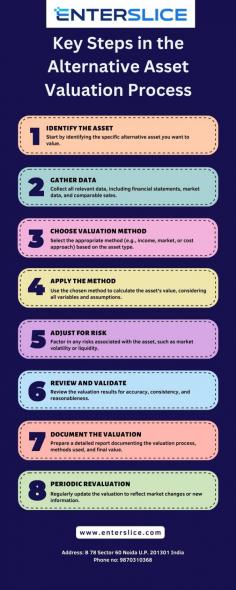
The alternative asset valuation process involves several key steps to accurately determine an asset's worth. First, data collection gathers information about the asset, including financial performance, market conditions, and comparable assets. Next, selecting the valuation method is crucial; common methods include the income approach, market approach, and cost approach, each suited to different types of assets. Then, analyzing the data involves applying the chosen method to assess the asset’s value. Finally, preparing the valuation report summarizes the findings, provides a detailed analysis, and offers recommendations based on the valuation results. This structured approach ensures a thorough and accurate valuation of alternative assets.

